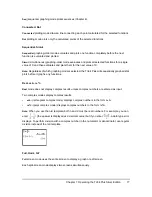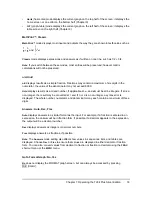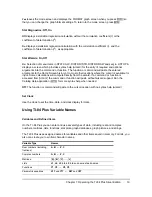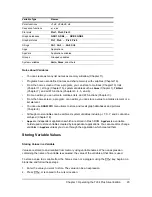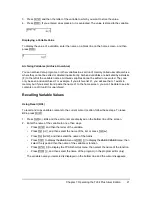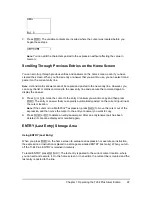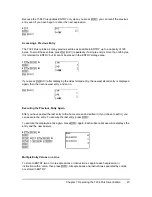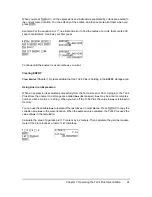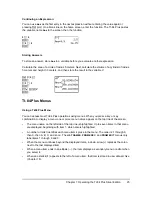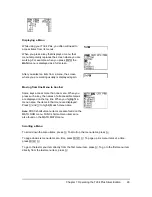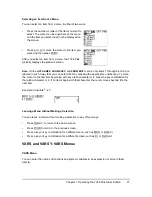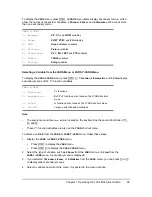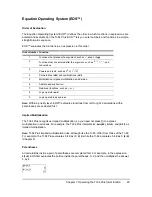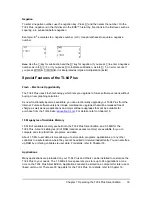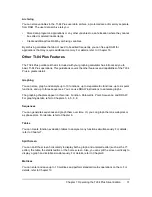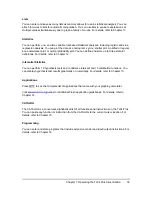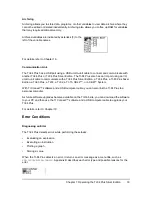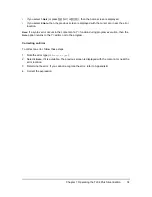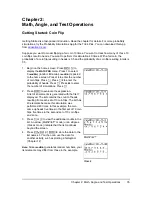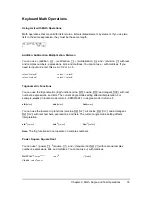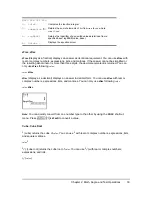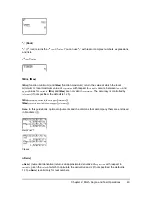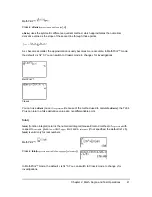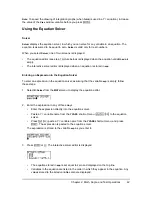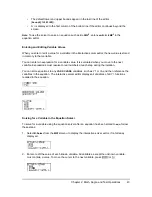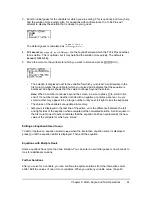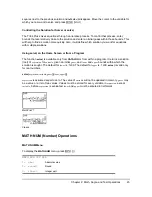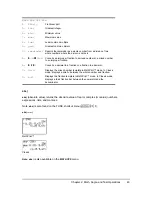
Chapter 1: Operating the TI-84 Plus Silver Edition
31
Archiving
You can store variables in the TI-84 Plus user data archive, a protected area of memory separate
from RAM. The user data archive lets you:
•
Store data, programs, applications or any other variables to a safe location where they cannot
be edited or deleted inadvertently.
•
Create additional free RAM by archiving variables.
By archiving variables that do not need to be edited frequently, you can free up RAM for
applications that may require additional memory. For details, refer to: Chapter 18.
Other TI-84 Plus Features
The TI-84 Plus guidebook that is included with your graphing calculator has introduced you to
basic TI-84 Plus operations. This guidebook covers the other features and capabilities of the TI-84
Plus in greater detail.
Graphing
You can store, graph, and analyze up to 10 functions, up to six parametric functions, up to six polar
functions, and up to three sequences. You can use DRAW instructions to annotate graphs.
The graphing chapters appear in this order: Function, Parametric, Polar, Sequence, and DRAW.
For graphing details, refer to Chapters 3, 4, 5, 6, 8.
Sequences
You can generate sequences and graph them over time. Or, you can graph them as web plots or
as phase plots. For details, refer to Chapter 6.
Tables
You can create function evaluation tables to analyze many functions simultaneously. For details,
refer to Chapter 7.
Split Screen
You can split the screen horizontally to display both a graph and a related editor (such as the Y=
editor), the table, the stat list editor, or the home screen. Also, you can split the screen vertically to
display a graph and its table simultaneously. For details, refer to Chapter 9.
Matrices
You can enter and save up to 10 matrices and perform standard matrix operations on them. For
details, refer to Chapter 10.

